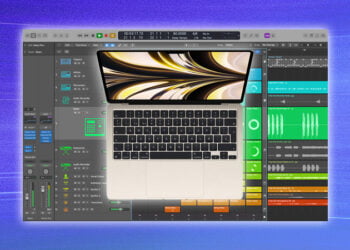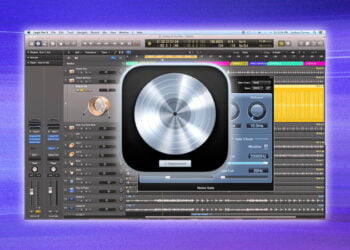Music production is a highly enjoyable and rewarding activity that anyone can partake in, regardless of their level of experience or expertise.
With the advent of digital audio workstations (DAW) such as Logic Pro X, creating beats has never been easier!
In this blog post, we’ll go through the basics of making beats in Logic Pro X, from setting up the program to recording and editing audio.
Whether you’re brand new to music production or just need a refresher, this blog post is for you.
We’ll also be exploring more advanced techniques such as sound design and mixing, so you can make beats that truly stand out.
We’ll be covering all this and more in today’s blog post, “How To Make Beats On Logic Pro X.” Let’s get started!
Learn about the software interface
When learning how to make beats on Logic Pro X, the first step is to become familiar with the software interface.
Logic Pro X has a wide range of tools and features that you can use to create your own beats.
Get to know the tools, such as the grid editor, the virtual MIDI keyboard, and the track automation.
Understand the layout of the tracks and the different modes available, such as Arrange, Mix, and Audio.
With a good understanding of the interface, you’ll be able to create beats with ease.
Create a basic beat loop
One of the easiest ways to start making beats on Logic Pro X is by creating a basic beat loop.
First, open the software, select the Musical Typing tool, and select the drum kit of your choice.
You can then create a basic beat loop by tapping out the rhythm on your computer’s keyboard.
You can also adjust the drum pattern to loop by adjusting the tempo, adjusting the length of the loop, and adding additional sounds if you want to make the beat loop more complex.
Once you’ve created your basic beat loop, you can start adding additional instruments and effects to it to create a full-fledged beat.
Add bass and percussion elements
Next, you’ll want to add bass and percussion elements to your track to give it a more exciting and fuller sound.
To do this, you’ll need a virtual instrument.
In Logic Pro X, this is called an EXS24 and is found in the Plug-ins tab.
You can choose from a variety of bass and percussion sounds to add to your track, such as bass guitar, kick drums, and snare drums.
Once you’ve selected the sound you want to use, you can manipulate it using the virtual instruments’ controls.
You can also adjust the volume, pan, and other parameters and effects to create the sound you want.
Begin adding other sounds and effects
The fourth step to making beats on Logic Pro X is to start adding other sounds and effects.
There are lots of instruments and samples to choose from, as well as a wide range of effects.
These can be used to create new sounds, as well as to shape and change existing ones.
You can also apply effects like compression and EQ to give your beat more body and clarity.
Experimenting with different sounds and effects can really help to bring your beat to life.
Layer and combine sounds
Once you have all the individual sounds you need, it’s time to layer and combine them to make your beat.
You can layer sounds simply by adding one sound after another in the track.
You can also combine multiple sounds together using the “Summing” feature in Logic Pro X.
To use this feature, select the sounds in the track you want to combine and click on “Summing” in the Mixer menu.
This will combine the sounds into one track that you can then manipulate and modify the sound of.
Experiment with the different sounds and summing them together to create unique sounds for your beat.
Use EQ and compression to refine your sound
After you have created your beat, you may want to refine it using EQ and compression.
EQ is a tool that allows you to boost or cut certain frequencies in your sound.
This can be used to make your sounds stand out in a mix or to get rid of any unwanted sounds.
Compression can be used to even out the loudness between different elements of your beat.
This will make it sound cleaner and more professional.
When using compression, experiment with different settings for different instruments to get the desired effect.
Arrange and mix your track
Arranging and mixing your track is the next step in making beats.
This process involves changing levels, adding effects, and getting your overall sound balanced and sounding just right.
Start by getting familiar with the main mixing window in Logic Pro X, which will show you all the different tracks that make up your beat.
Then, adjust the levels of each track until the overall mix is at a good level.
Use the effects in Logic Pro X to add some flavor to your mix, such as reverb, delay, EQ, and compression.
Finally, use the mastering tools in Logic Pro X to give your mix a polished, professional sound.
Finalize and export your track
After you’ve finished creating your track, you’re ready to export it.
To do this, go to File > Bounce and choose the desired file format.
After you’ve selected the format, give the track a name, choose an output location, and click on the “Bounce” button.
After the track is finished exporting, you now have a beautiful beat ready to be shared with the world!
Conclusion
In conclusion, learning how to make beats on Logic Pro X is a great skill to have for aspiring music producers.
The software offers an intuitive user interface, comprehensive instrument and effect options, and powerful mixing and mastering capabilities.
With a little practice and dedication, anyone can learn how to use Logic Pro X to make professional sounding beats.






















